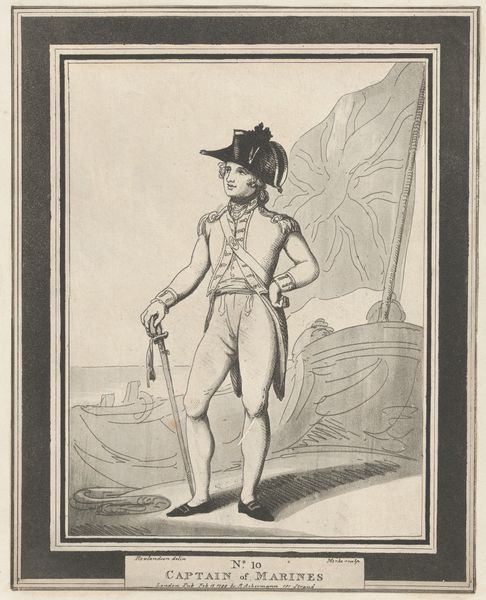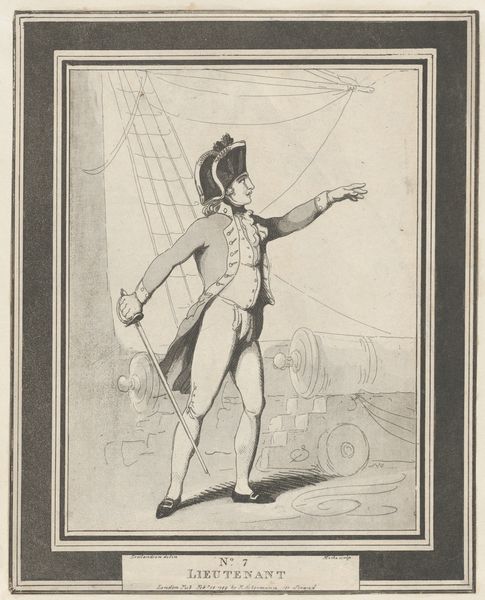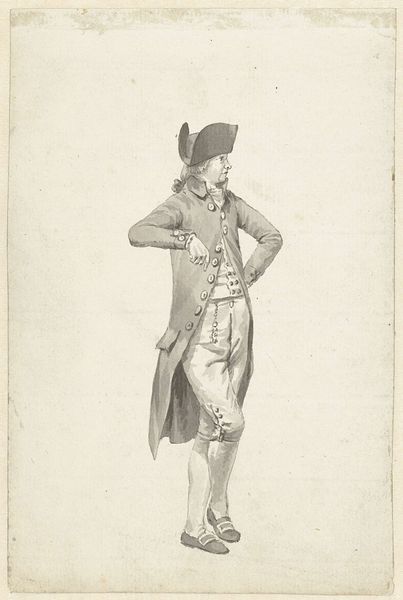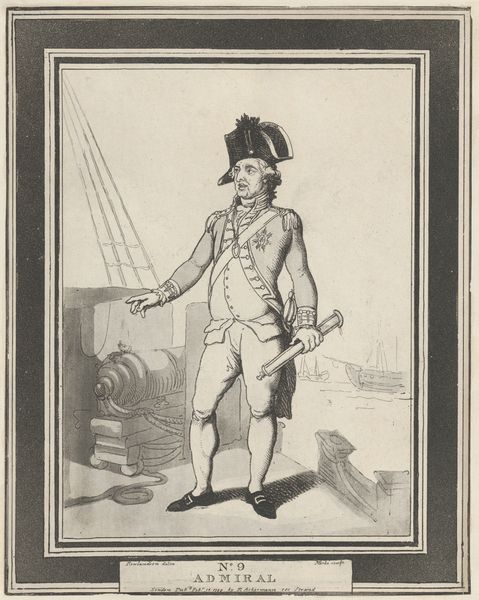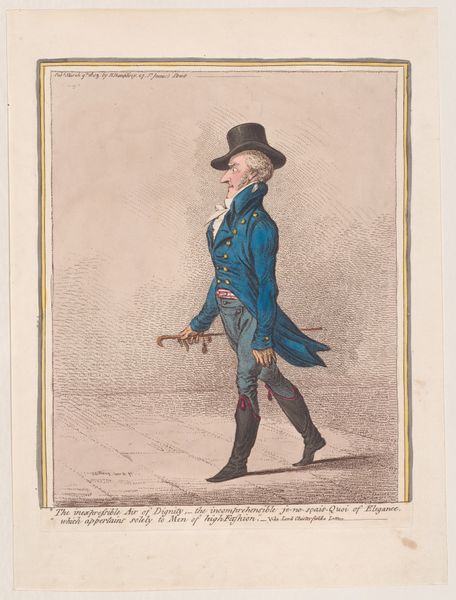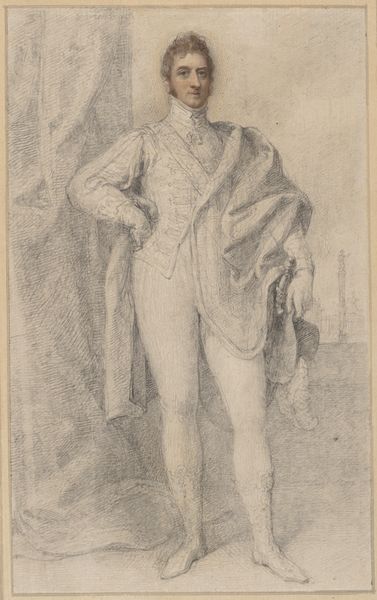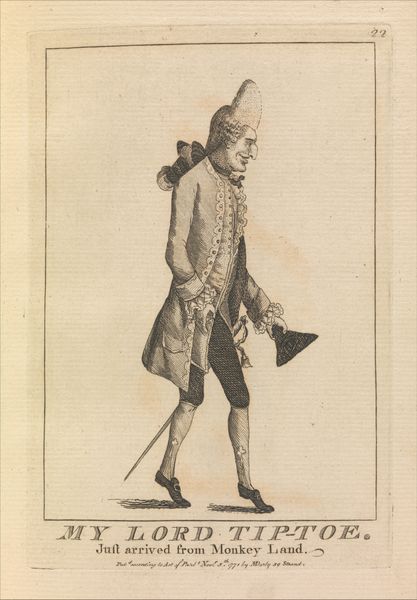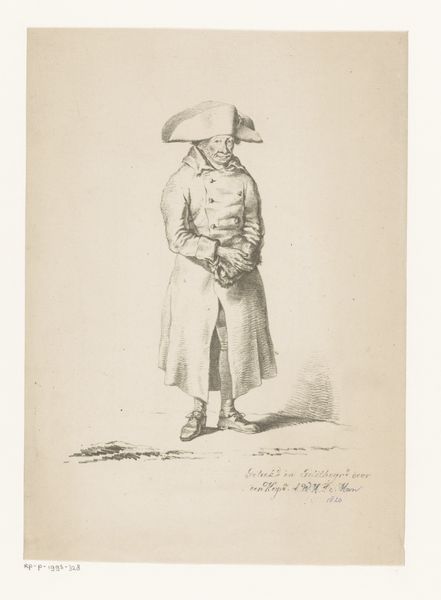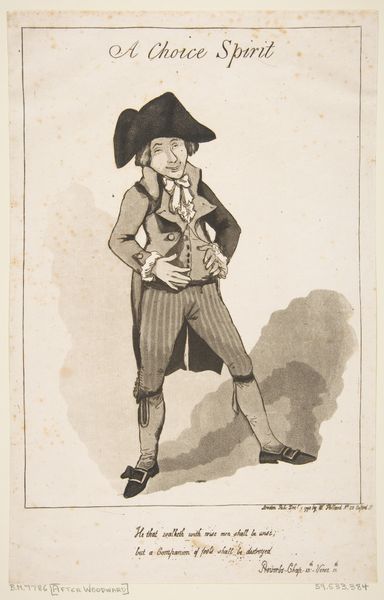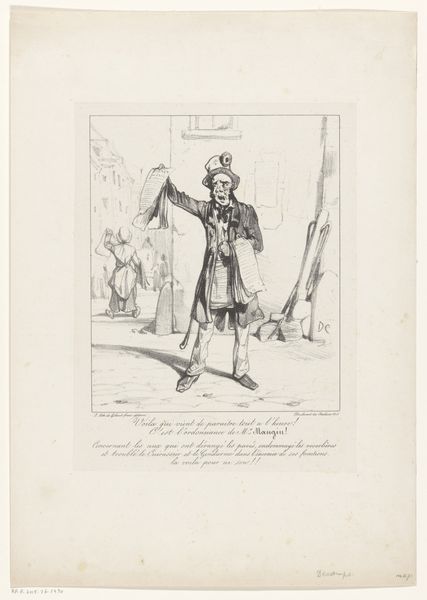
drawing, print, engraving
#
portrait
#
drawing
#
neoclacissism
# print
#
men
#
line
#
history-painting
#
engraving
Dimensions: Sheet (trimmed and inset): 9 3/4 × 7 11/16 in. (24.7 × 19.5 cm)
Copyright: Public Domain
Editor: Here we have "No. 8: Captain," an engraving from 1799. The lines are so precise, almost mechanical. How might we read this piece, particularly regarding the artist's tools and process? Curator: Let's think about this print within the context of late 18th-century production. Engraving was a labor-intensive process, reliant on specialized tools and skilled artisans. The precision you noted wasn't merely aesthetic, but a reflection of industrializing modes of production and consumption, applied even within art. What does this suggest about the portrayal of military power? Editor: So, the very act of creating this image, with its dependence on specific tools and skilled labor, mirrors the regimentation and order associated with the military depicted? Curator: Precisely. The line becomes a stand-in for control and authority. The image isn’t just a portrait; it’s a commodity, produced for dissemination, perhaps even propaganda. Think about the availability of prints versus original paintings, how did the accessibility of images like this shape public perceptions of figures of authority? Editor: It sounds like the print, as a reproducible object, democratized the image of power while subtly reinforcing its structure. I never considered that the process could be as important as the subject itself. Curator: Absolutely. By focusing on the materiality of the engraving, the labour involved, and its place in a system of production and distribution, we gain insight into how meanings were constructed and circulated in the late 18th century. So, do you agree that approaching art by acknowledging the tools and historical labor used can offer richer, more historically grounded interpretations? Editor: Yes, it makes art feel so much more connected to everyday life and labor practices! Curator: Indeed! Recognizing how art is produced alongside other cultural artifacts sheds new light on the context of its creation.
Comments
No comments
Be the first to comment and join the conversation on the ultimate creative platform.
